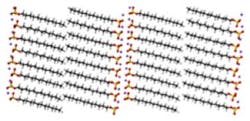Toothpastes: How effective are they in plaque and gingivitis control?
The importance of daily mechanical plaque removal on hard and soft surfaces in the oral cavity is well-known and confirmed by the international scientific literature. However, enthusiastic use of the toothbrush is not synonymous with a high standard of oral hygiene (1 Van Der Weijden et al 2005).
This is one of the reasons we suggest the addition of dentifrice to the toothbrush, and this pairing forms an integral part of most oral hygiene regimens. It is appropriate to consider the role of these aids in plaque control and to try to personalize this regimen to individual patient needs.
Sodium Laurel Sulfate
The analysis of different active principles today regarding our recommendations in chemical plaque control has been viewed with an eye on future: the new trends in research in dentistry are always more directed toward being less invasiveness and trying to imitate nature considered as an “ultimate architect.” (Roveri et al. 2009) (4)
From this starting point, recent research has been conducted at Istituto Stomatologico Tirreno (Versilia Hospital, Tuscany) with the research team of Prof. Ugo Covani and Prof. Norberto Roveri on the use of nanotechnologies as carriers for antibacterial molecules with natural origins (CARBONATE-HYDROXYAPATITE-ZINCUM SUBSTITUTED).
Studies have been submitted to the Journal of Nanomedicine and archives of Oral Biology, which demonstrates that these new molecules have really reduced limits (we could say no limits) and a wide efficacy potential , similar to the chlorhexidine. These studies open our eyes to new research on topics and allow us to say that the landscape in the research area of primary prevention is wide open.
References
1. Hioe KP, van der Weijden GA. The effectiveness of self performed mechanical plaque control with triclosan containing dentifrices. International Journal of Dental Hygiene 2005; 3:192-204.
2. Moore C, Addy M,Wear of dentine in vitro by toothpaste abrasives and detergents alone and combined. J Clin Periodontology 2005 ; 32: 1242-1246.
3. Skaare A, Kjaerheim V, Barkvoll P. Rolla G Skin reactions and irritation potential of four commercial toothpastes. Acta Odontol Scandin 1997;55:133-136.
4. Roveri N.,Foresti E., Lelli M., Lesci I. G.; Recent Advancements in Preventing Teeth Health Hazard: The Daily Use of Hydroxyapatite Instead of Fluoride. Recent Patents on Biomedical Engineering 2009, 2, 197-215.
Additional Reading
1. Hannig M and Hannig C. Nanomaterials in preventive dentistry. Nature Nanotechnology. Progress article, Published online: 27 June 2010 | doi: 10.1038/nnano.2010.83. http://www.nature.com/nnano/journal/v5/n8/abs/nnano.2010.83.html.




